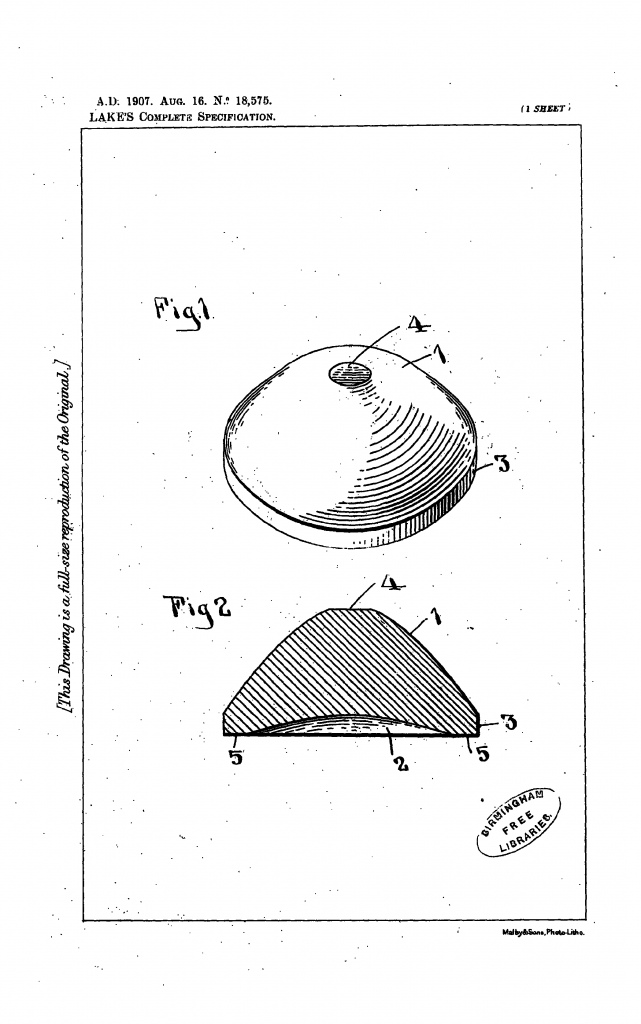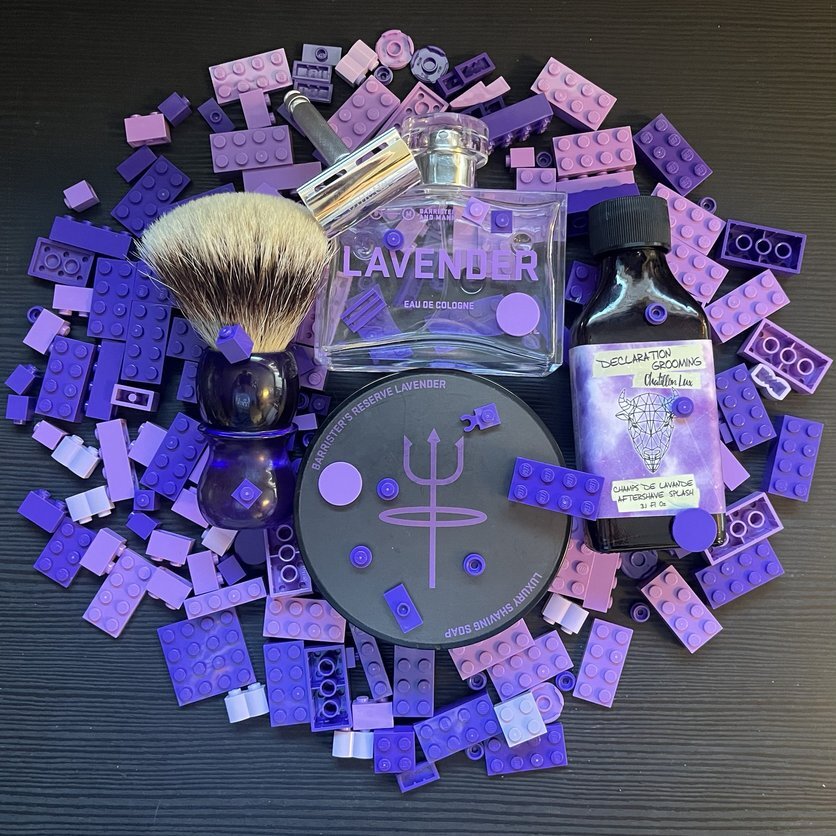In the same year George Schmidt patented his shaving brush container, William Edward Lake secured a patent on behalf of the Colgate Company for an improvements in cakes of shaving soaps. An improvement that, if the claims are taken at face value, would make the cakes of soaps more secure both in shipment and in the shaving mug.
To quote the patent:
Briefly, this invention comprises a cake of soap for shaving purposes which is made of a peculiar and novel shape in order that said cake may be firmly held in place during shipment and may also be efficiently and evenly used when placed in the usual shaving mug or cup and so that the same may be held within said mug or cup without danger of becoming loosened. The invention com- prises certain details of construction and form to be more particularly pointed out in the following specification and claimed in accompanying claims.

From British patent 1907-18575 showing the claimed improvements in cakes of shaving soaps.
The improvements is in the shape of the shaving soap cakes. The upper side of the cake should be curved with a flat top, almost like a frustum of a cone. Lower down the sides would be parallel, like a cylinder. And the underside of the cakes should have a recess closely matching the bottom of a shaving mug – I assume this means that shaving mugs at the time didn’t have a flat bottom.
To quote from the main claim of the patent:
A cake of soap, the base of which presents the greatest diameter of the cake, said diameter and the contour of the base adapting said base for closely conforming to the angle at the bottom and sides of a usual shaving- mug, said cake diminishing in cross section upwardly from a narrow vertical margin which bounds said base, the apex of said cake being formed by a small plane surface parallel to the plane of the base…
The flat top and cylindrical sides would make it easy to stack securely in a shipping crate. The cylindrical sides and recessed bottom would keep the cakes of shaving soaps secure in the mug. The patent also claims that the shape avoided thin areas, making it easier to mould without risking the cake splitting or cracking.
As for the mostly conical shape of the upper surface, I assume that it was for two reasons. Firstly to make it easier for water to drain away. Secondly to make it easier to lather, as the shape provides for more surface area.
I can’t see why this design for a shaving soap cake shouldn’t work. Except very few people leave a cake of shaving soap in their shaving mugs these days.
You can read the whole patent for improvements in cakes of shaving soaps on Espacenet.

